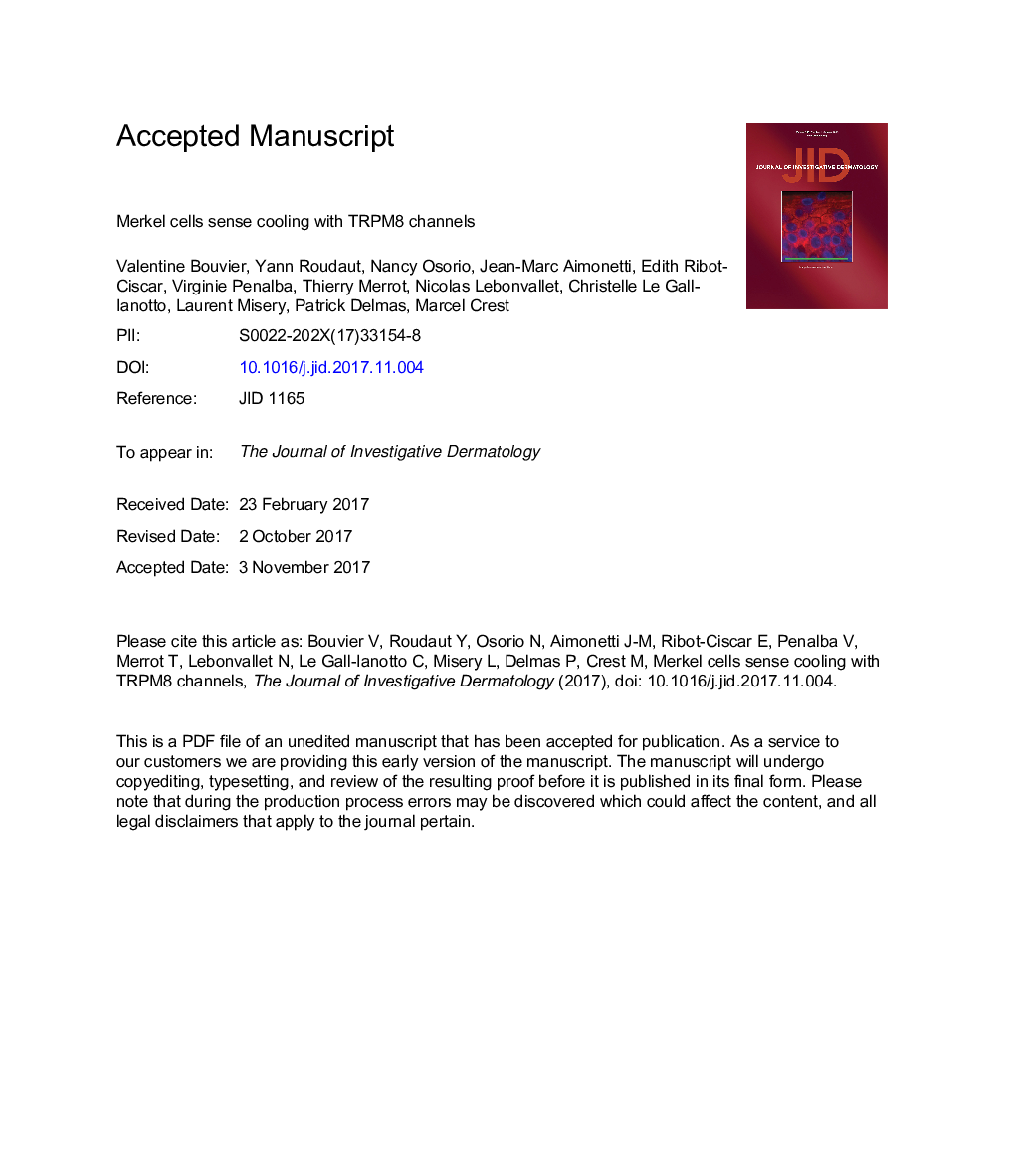| Article ID | Journal | Published Year | Pages | File Type |
|---|---|---|---|---|
| 8716135 | Journal of Investigative Dermatology | 2018 | 31 Pages |
Abstract
In the skin, Merkel cells connect with keratinocytes and Aβ nerve fibers to form a touch receptor that functions as a slow adapting mechanoreceptor (slow adapting type 1). In human and mouse Merkel cells, we observed an increased concentration of intracellular Ca2+ ions in response to cold temperature and transient receptor potential melastatine 8 (TRPM8) ion channel agonists. A reduction in the response to cooling and TRPM8 agonists occurred after the addition of TRPM8 antagonists, as well as in TRPM8 knockout mice. Cold temperature and TRPM8 agonists also induced a current that was inhibited by a TRPM8 antagonist. Our results indicate that Merkel cells sense cooling through TRPM8 channels. We hypothesized that cooling modulates the slow adapting type 1 receptor response. Cooling mouse skin to 22°C reduced the slow adapting type 1 receptor discharge frequency. Interestingly, we observed no such reduction in TRPM8 knockout mice. Similarly, in human skin, a temperature of 22°C applied to the slow adapting type 1 receptive field reduced the spiking discharge. Altogether, our results indicate that Merkel cells are polymodal sensory cells that respond to mild cold stimuli through the activation of TRPM8 channels. Thermal activation of Merkel cells, and possibly other TRPM8-expressing non-neuronal cells, such as keratinocytes, potentially adapts the discharge of slow adapting type 1 receptors during cooling.
Related Topics
Health Sciences
Medicine and Dentistry
Dermatology
Authors
Valentine Bouvier, Yann Roudaut, Nancy Osorio, Jean-Marc Aimonetti, Edith Ribot-Ciscar, Virginie Penalba, Thierry Merrot, Nicolas Lebonvallet, Christelle Le Gall-Ianotto, Laurent Misery, Patrick Delmas, Marcel Crest,
